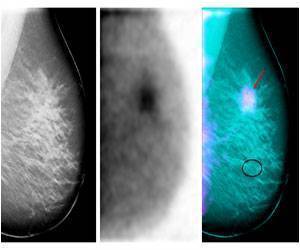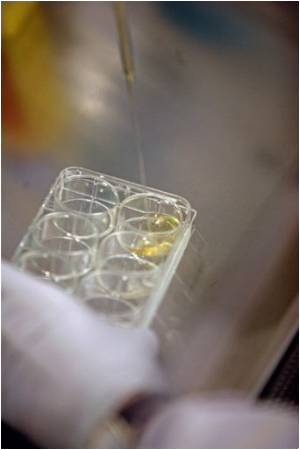For the first time, scientists have pinpointed the genetic cause in some people of an incurable muscle-wasting disease, Emery-Dreifuss muscular dystrophy (EDMD).

The research was funded by The Wellcome Trust and was only possible by the University of Leicester team collaborating with groups in Germany (University of Greifswald), Italy (Institute of Molecular Genetics, Bologna, Italy) and the USA (Columbia University).
To date, only six genes have been linked to EDMD. Despite rigorous screening, at least 50% of patients with EDMD have no detectable mutation in the 6 known genes.
Now the breakthrough study has discovered two more genes linked to the disease.
Lead researcher at Leicester, Dr Sue Shackleton, senior lecturer in Biochemistry, said:
"We are really excited to have identified mutations in two new genes - SUN1 and SUN2 - that are responsible for causing some cases of the muscle wasting disease Emery-Dreifuss muscular dystrophy."
Advertisement
"By adulthood, most individuals also develop heart problems that result in an abnormal heartbeat and a high risk of sudden cardiac arrest – the main treatment for this is insertion of a pacemaker. At the moment there is no cure for this disease and no effective treatment for the muscle wasting and joint stiffening."
Advertisement
However, in up to 50% of individuals with EDMD, no mutation has been identified in any these genes.
Dr Shackleton said: "Our research has identified two new genes, SUN1 and SUN2, that are responsible for causing EDMD in some of these individuals." The proteins produced by these genes also form part of the structural scaffold of the nucleus.
Importantly, we have identified a novel way in which these mutations act in muscle cells.
"Our research has shown that the mutated SUN1 and SUN2 proteins interfere with connections between the nucleus and the rest of the cell and that this results in abnormal positioning of the nuclei within the muscle cells." The nuclei are normally anchored at the edges of muscle cells, probably so that they do not get in the way of the main structures of the cell that are involved in muscle contraction. Incorrect positioning could further damage the nuclei and could also impair muscle contraction, leading to the muscle wasting and weakness seen in EDMD sufferers.
"We therefore believe that incorrect positioning of muscle nuclei may contribute to causing the symptoms of EDMD. Further research is now needed to investigate this new potential disease mechanism and to increase our understanding of how nuclei are positioned in normal muscle cells, but our findings offer the possibility for a novel drug target for the treatment of this disease in the future."
Dr Marita Pohlschmidt, Director of Research at the Muscular Dystrophy Campaign, said: "We welcome the encouraging results of this study, which has identified two new genes which can cause Emery-Dreifuss muscular dystrophy." In the future, this will give more people an accurate genetic diagnosis, helping them to understand the risk of passing it on to their children and to make informed choices with regards to planning for a family.
"An accurate genetic diagnosis also means that patients will receive more precise information about the prognosis of the condition. Most importantly, a better understanding of the condition is crucial for the development of treatments for this complex and devastating condition."
Emily Beale, whose son Tayler (11) has Emery-Dreifuss muscular dystrophy, said: "Tayler's condition affects the muscles in his legs, arms and neck. He falls regularly because of the weakness in his calf muscles which causes his feet to droop and general instability in his legs." This year he lost the ability to run, he was never very fast, but he misses the ability to try and keep up. In the last year, Tayler's elbows have started to contract meaning he cannot stretch his arms out straight. He finds carrying heavy objects difficult, and struggles to hold things for long periods of time with his hands.
"We are thrilled that someone is researching Emery-Dreifuss muscular dystrophy and we hope that Tayler will see a treatment within his lifetime."
Source-Eurekalert










